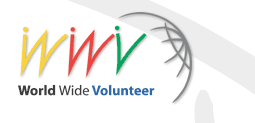Report (Part 6): Sustainable Development Convention 200231 October 2002 © ICVolunteers and IBEX, Geneva, Switzerland Contents
Green Network: Denmark Model NOOR Eye ClinicTime: 31 October 2002, 13:30 Location: Salle C-1 Chair: Dr. Nemai Basu, Management and IT Consultant Presenters/ Participants: Mr. Eric Ørskov, Senior Advisor, Green Network, Vejle, Denmark 1) Mr. Ørskov explained the function of the Green Network, established in 1995, which at present encompasses six public authorities and 250 private companies/enterprises in eastern Denmark. Its aim is to develop cooperation between these entities to deal with environmental and sustainability issues of relevance to business through dialogue and mutual understanding rather than directives. Continuous improvement is one of its principles and businesses in Vejle have been assisted in drawing up an Environmental Report which identifies the problems, both external and work-related, sets up an action plan and suggests tools to find solutions. This is reviewed every two years with a new report being drawn up and new goals set. Successful companies preparing an environmental report in accordance with Green Network's concept are awarded a diploma and a special 'green' flag, evidence of belonging to society's elite. In this way, companies and enterprises can also use the result to sharpen their competitive edge by using the award as a marketing tool. The program is now gradually being extended to other areas of Denmark and about 1,100 companies are presently involved. Examples of achievements by companies in the Green Network have been a 75% reduction of energy consumption in a year by a metal working company, a 30-ton reduction of food wasted by a hospital and a 50% water consumption reduction by a laundry. 2) Dr. Csobod described the REC, founded in 1990 by the EU, Hungary and the US and has 29 signatories to the charter. Its aim is to assist in environmental problems in Central and Eastern Europe through the promotion of cooperation among non-governmental organizations, governments, business and other environmental stakeholders, the free exchange of information and public participation in environmental decision making. As a result, it encourages the promotion of multileveled relationships and partnerships. A specific example is the Tisza River Basin project, which covers five countries (Ukraine, Romania, Slovakia, Hungary and Yugoslavia) with a total of 14.4 million inhabitants. The project was established after major natural and environmental disasters to inaugurate a sustainable development program for the area as a whole. REC has also developed a Strategic Environment Assessment (SEA) to evaluate performances on a national, regional and local level in the areas of energy, transport, waste and watershed management. It can be applied to all plans, programs and policies. Some countries even require SEA for legislative proposals. 3) Mr. Christophe Iseli, major of Vernier one of Geneva, Switzerland's communes, very briefly described his commune's approach to promoting sustainable development. With a population of 30,000, 50% of whom are foreign and comprise over 100 nationalities, the commune has one of the highest rates of unemployment and lowest income levels in Geneva. In the spring of 2002, a non-political "Sustainable Development Observatory" of nine members was set up to examine submitted projects and serve as a link between the communal authorities and the civil society. Residents will be encouraged to participate in the decision-making process: to question and comment on projects and to focus on solutions for issues that directly concern them. Posted: 2002-10-31 Updated: 2010-1-05 | ||








